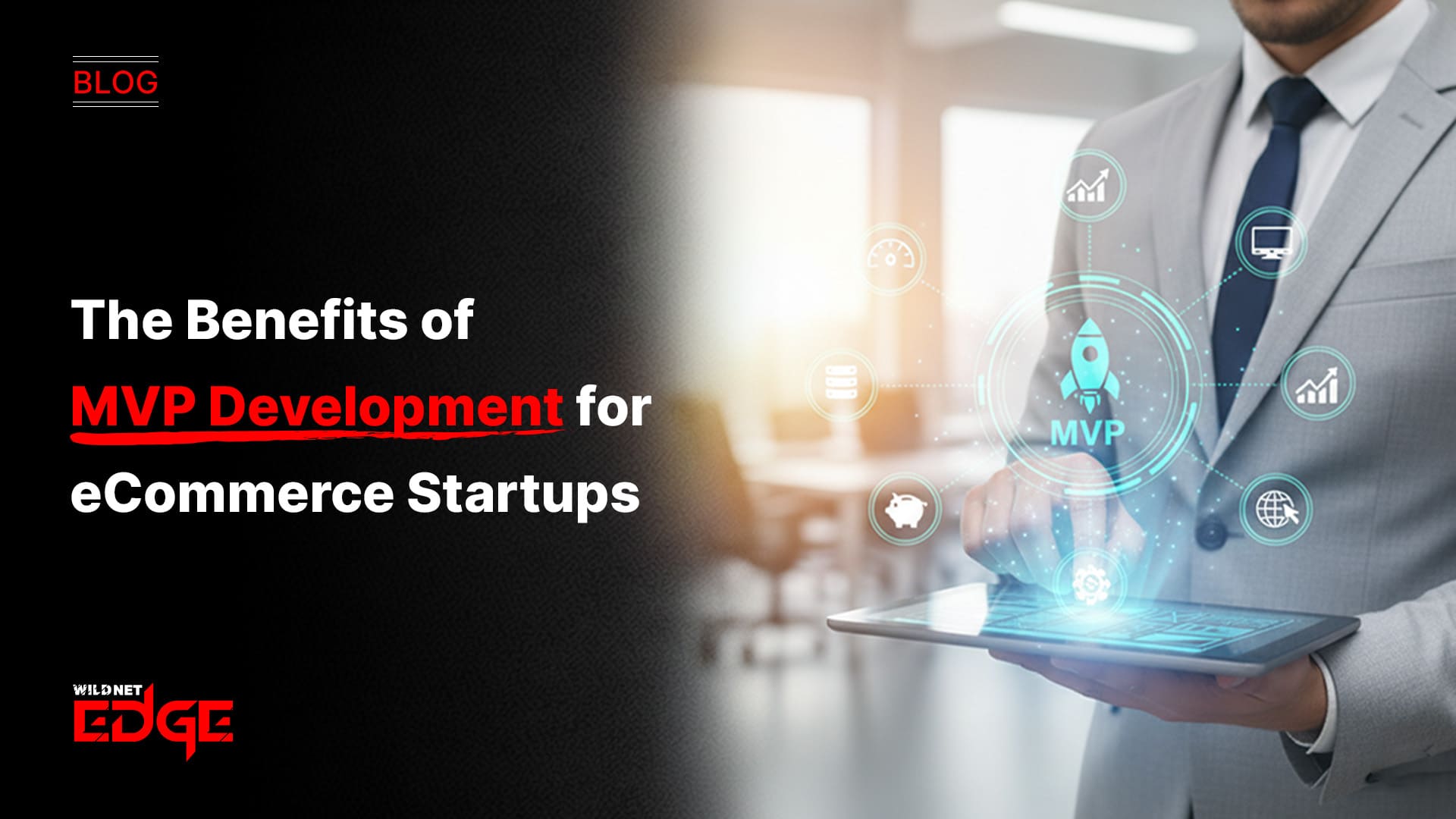TL;DR
This article outlines the strategic advantages of using a Minimum Viable Product approach for e-commerce startups. It defines an MVP for eCommerce startups as the essential, functional version of an online store designed for rapid launch and market learning. The piece highlights how this lean eCommerce development strategy significantly reduces upfront costs and accelerates time-to-market. Key benefits covered include adequate product validation with real customers, minimizing financial risk, and attracting early investors. By focusing on core features and iterating based on feedback, startups can build a more sustainable and customer-centric business.
Launching an e-commerce startup in 2025 is incredibly exciting, but the path is full of challenges. One of the biggest challenges is spending considerable time and money building a feature-rich online store based on assumptions, only to find that the market doesn’t respond as expected. The most innovative way to navigate this uncertainty and conserve precious resources is by embracing the Minimum Viable Product (MVP) strategy. Building an MVP for eCommerce startups is the key to launching faster, learning quicker, and dramatically increasing your odds of success.
What is an MVP for eCommerce Startups?
An MVP for eCommerce startups is the most basic, functional version of your online store that allows you to sell your core products to early customers and validate your business concept. It’s not about launching with every bell and whistle, but with just enough to start learning.
This means focusing on the essential user journey: product discovery, adding to cart, and secure checkout. Anything beyond that, complex loyalty programs, advanced personalization features, intricate blog sections can wait. This disciplined approach is the essence of lean eCommerce development.
Why the MVP Approach is Crucial for eCommerce
In the fast-paced world of online retail, the MVP strategy provides critical advantages.
Validating Your Niche and Product Demand
Is there a real market for your specific products? Will customers actually buy them online? An MVP is the fastest way to get answers to these fundamental questions. It allows for direct product validation with real, paying customers. Their behavior what they browse, what they buy, what they ignore provides invaluable data that is far more reliable than surveys or market research. This feedback loop is essential for refining your offering. Expert Product Development Services often guide this validation process.
Reducing Financial Risk and Conserving Capital
Building a full-featured eCommerce platform from scratch can cost hundreds of thousands of dollars. For a startup, this is a massive upfront risk. An MVP approach significantly lowers this barrier. By focusing only on essential features, you can launch for a fraction of the cost, conserving your capital for marketing, inventory, and future iterations based on validated learnings. This makes it an ideal strategy for Software Development for Startups.
Faster Time-to-Market
Every day you spend building without customer feedback is a day your competitors might be learning or launching. An MVP for eCommerce startups can often be built and launched in just a few months, compared to 6-12+ months for a complete build. This speed allows you to start generating revenue sooner, capture early market share, and begin the crucial cycle of iterating based on real user data.
Attracting Early Investors
Investors want to see traction and evidence of product validation. A launched MVP, even with modest sales, is far more compelling than just a business plan. It demonstrates your ability to execute, shows there’s genuine market interest, and provides tangible metrics that de-risk the investment for potential backers.
The Lean eCommerce Development Process for MVPs
Building an effective MVP follows a structured, iterative approach.
1. Define Your Core Offering and Target Audience
Be specific. What products will you launch with? Who are your ideal first customers (early adopters)? What is the absolute essential path for them to discover and purchase your product?
2. Prioritize Essential Features
Focus ruthlessly on the “must-haves” for a functional store:
- Product listings (with clear images/descriptions)
- Shopping cart functionality
- Secure checkout and payment processing
- Basic order management (for you). Cut everything else for Version 1.
3. Choose the Right Technology Platform
Select a platform that allows for rapid development but doesn’t lock you into future limitations. Options include:
- Hosted Platforms (e.g., Shopify): Fastest to launch and suitable for simple MVPs, but can be limited in the long term.
- Headless Commerce + Custom Frontend: Offers more flexibility and scalability, often built by an e-commerce development Company.
- Complete Custom Build: Maximum flexibility, but highest initial cost and the most extended timeline.
4. Build Quickly and Iterate
Work with a development team focused on speed and quality for the core features. Launch the MVP as soon as it’s viable.
5. Measure, Learn, Adapt
Once live, obsess over user behavior. Use analytics to track conversion funnels, collect feedback through surveys and customer service, and use these insights to prioritize your next development cycle. This continuous loop is the heart of lean eCommerce development.
Our MVP for eCommerce Services in Action: Case Studies
Case Study 1: A Niche Subscription Box Service
- The Challenge: A founder had an idea for a unique subscription box but wasn’t sure about market demand or the optimal pricing structure. They had limited funding for the initial build.
- Our Solution: As their chosen MVP Development Company, we built a simple eCommerce MVP focused only on selling the first month’s box as a one-time purchase. We used Shopify initially for speed, focusing on a compelling landing page and a smooth checkout.
- The Result: The MVP launched in under two months. The initial sales data validated strong demand and helped them refine their pricing. They then used this validation to secure funding and partner with us for more Custom Software Development Services to build out the full subscription management features.
Case Study 2: A D2C Brand Testing a New Product Line
- The Challenge: An established D2C brand wanted to launch a completely new product category but was uncertain about customer interest. They didn’t want to invest heavily in integrating it into their complex existing platform without validation.
- Our Solution: We created a separate, standalone MVP microstore using a headless commerce approach. This allowed them to launch the new product line quickly and independently, testing marketing messages and gathering initial sales data.
- The Result: The product validation was overwhelmingly positive. The data gathered from the MVP gave the brand the confidence to fully invest in integrating the new category into their central platform and scaling production.
Our Technology Stack for eCommerce MVPs
We choose technologies optimized for speed, scalability, and the e-commerce ecosystem.
- Platforms: Shopify, BigCommerce (for simpler MVPs), Headless CMS (Contentful, Strapi) + Headless Commerce (commercetools, Shopify Hydrogen)
- Frontend: React (Next.js), Vue.js (Nuxt.js)
- Backend (Custom): Node.js, Python
- Cloud: Vercel, Netlify, AWS, Google Cloud
- Payments: Stripe, PayPal
Conclusion
For eCommerce startups, the MVP approach isn’t just a trend; it’s a strategic imperative. Building an MVP for eCommerce startups allows you to navigate the inherent risks of launching a new venture by prioritizing learning and product validation. By embracing lean eCommerce development, you conserve capital, accelerate your time-to-market, and build a business based on real customer needs, not just assumptions.
Ready to build an eCommerce business that lasts? At Wildnet Edge, our AI-first approach ensures we create intelligent, data-driven platforms. We are your expert partner in turning your vision into a validated, scalable, and successful online store.
FAQs
Yes, absolutely. An eCommerce MVP should focus solely on the core path to purchase: discovering a product, adding it to the cart, and securely checking out. Features like customer accounts, blogs, complex filtering, or loyalty programs can almost always wait until after you’ve validated the core offering.
Not necessarily. Focus on making the core experience high-quality, fast, and visually appealing within its limited scope. Communicate clearly that this is an early version and you value user feedback. Early adopters often appreciate authenticity and the chance to shape a product.
Often, the biggest challenge is integrating a secure and reliable payment gateway smoothly into the checkout flow. This is a non-negotiable feature that requires careful implementation even in an MVP.
Costs vary greatly, but using a platform like Shopify might keep initial setup low, though transaction fees add up. A custom-built MVP using headless architecture might range from $30,000 to $70,000+, depending on the complexity of the core features and design.
Your initial assumptions are likely wrong in some way. The feedback and behavior data from your first real customers are the most valuable resource you have. Ignoring this data and sticking rigidly to your original plan is a common reason why startups fail. Lean eCommerce development is about adapting.
A well-architected MVP is designed to be the foundation for future scaling. If built correctly (especially using modern architectures like headless commerce), you can iteratively add features and scale the infrastructure without needing a complete rebuild.
Focus on conversion rate (visitors to purchasers), average order value (AOV), cart abandonment rate, and customer acquisition cost (CAC). Qualitative feedback on the user experience is also crucial during the initial product validation phase.

Nitin Agarwal is a veteran in custom software development. He is fascinated by how software can turn ideas into real-world solutions. With extensive experience designing scalable and efficient systems, he focuses on creating software that delivers tangible results. Nitin enjoys exploring emerging technologies, taking on challenging projects, and mentoring teams to bring ideas to life. He believes that good software is not just about code; it’s about understanding problems and creating value for users. For him, great software combines thoughtful design, clever engineering, and a clear understanding of the problems it’s meant to solve.
 sales@wildnetedge.com
sales@wildnetedge.com +1 (212) 901 8616
+1 (212) 901 8616 +1 (437) 225-7733
+1 (437) 225-7733































